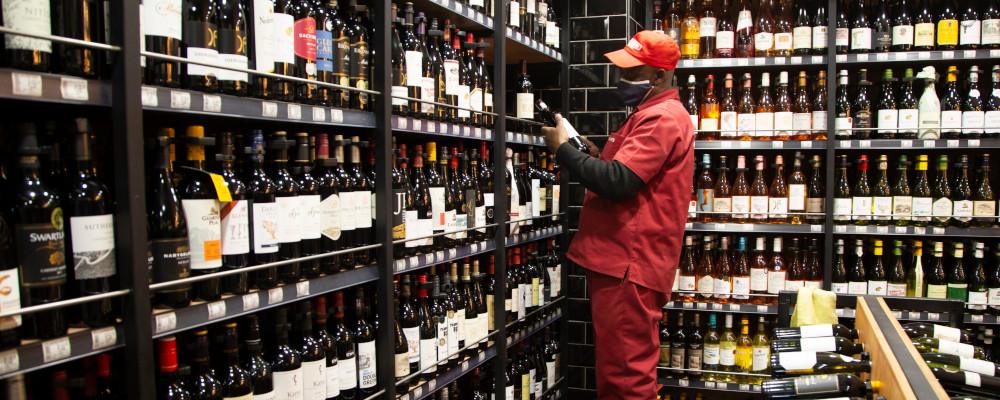In the middle of last week I was invited to a consumer tasting by its organizer, Wines of South Africa. The small but sold-out walk-around event featured wines presented by half a dozen importing agents in the back room of the very much on-trend restaurant on Toronto’s Ossington Strip, Paris Paris. The venue and the vibe were a long way from the first South African tasting I attended nearly 20 years ago, which was a sit-down dinner at a mid-town tennis club. So were the wines.
South African wines have been popular in Canada, and the other big export markets like the U.S., U.K., and the Netherlands, since the end of apartheid and sanctions in the 1990s. But the kinds of wines that initially found a following here thirty years ago tended to be best described as cheap and cheerful. There are still a lot of those wines in the market here, but they weren’t at the tasting.
The South African wines at the Paris Paris tasting were sophisticated, fancy, and very much told the story of the high-end of the country’s production over the last decade and a half. The Western Cape’s wine regions have the advantage that they are close to its metropolis. As Barolo has Milan, and Priorat Barcelona, Stellenbosch and the other regions have Cape Town.
Cape Town is a global tourist magnet and a sunny retirement destination for wealthy Europeans. This means high-end restaurants and a hospitality infrastructure that support serious premium wines and establish reputations before they are exported to London, Amsterdam, or New York.
One of the big pivots in South African wine has been the move toward Mediterranean red grapes. A pioneer of this shift in the ’90s and early 2000s was Charles Back, whose Fairview winery popularized these new plantings with Goats do Roam.
One of Back’s winemakers who went on to become one of South Africa’s leading wine innovators, Eben Sadie, makes Mediterranean grape red wines in the more recently established region of Swartland. Sadie’s 2020 Columella was the lauded special guest of the event.
The 2020 vintage is the twenty-first bottling of a wine that truly tracks the 21st-century arc of South African winemaking. It’s a blend and the properties of the mix of grapes have changed and evolved over the years, as has the technique in the cellar. What has remained is the dominance of Southern Mediterranean varieties: Grenache, Syrah, Mourvèdre, and Carignan.
Powerful, yet delicate: a symphony of dark fruit flavours raised by notes of violets. It was really good. It costs about $200 a bottle from Sadie’s Ontario agent, Lifford. If it’s not sold out by the time this piece is posted, it will be soon. In any event, having established that the iconic wine was, in fact, iconic, it was time to find something more budget-friendly.
Nicholas Pearce and Will Predhome are, respectively, a successful wine importer and a high-end wine event organizer who make wine under their own label. They were there pouring the Pearce Predhomme Chenin Blanc and Cinseault, both from 2021. The wines are made at the Radford Dale winery in Stellenbosch, an innovator in its own right.
Both cost a little more than a tenth of a bottle of Columella and make terrific bistro wines: round and fruit-forward, very easy going down. Pearce Predhomme wines are something of an industry secret in Toronto, though poorly kept since they increasingly find their way onto the by-the-glass section of the city’s wine lists.
At the next table was a thick crowd surrounding Bernard Stramwasser, of the Le Sommelier agency. He had brought boutique bubbles: Cap Classique Pieter Ferreira. Ferreira has been making his namesake label, with his wife Ann, since 2012, but is best known as the (sparkling) winemaker at Graham Beck.
South Africa got very good at making “traditional-style” sparkling wine, which they call Méthode Cap Classique (or MCC for short) during the 1980s when sanctions against apartheid stopped the import of Champagne.
I made the mistake of skipping ahead to the next table, hoping the line would abate, but I waited too late and the supplies of small production Blanc de Blanc, Extra Brut, and Rosé were depleted when I returned. Next time.

The Ferreira wines were made from Chardonnay, Pinot Noir, or both, and while I may have missed them, I found a rewarding still version of each at the next table. The Buyers + Cellars agency was pouring the Paul Cluver Village Chardonnay 2021 and Village Pinot Noir 2020.
Paul Cluver’s wines are from elegant Elgin, southeast of Cape Town, and influenced by the cold South Atlantic. These are cool climate wines: crisp Chardonnay and bright red fruit Pinot Noir.
From Elgin, I went back west towards Cape Town to the Helderberg sub-region of Stellenbosch. Or so I learned when I found Courtney Stebbings of Genuine Imports pouring the Scions of Sinai wines at her table. I’d tried the 2021 Scions Granietsteen Chenin Blanc before when I spotted it on a list a few weeks before: it was a lovely mineral and citrus expression of South Africa’s trademark white grape.
What proved to be a revelation was the 2021 Scions of Sinai Swanesang Syrah. If the Columella evoked the deep Mediterranean notes of Châteauneuf-du-Pape, then here was an African version of the black fruit clarity of the Northern Rhône. Food friendly, lifted and aromatic, fruit more red than black, the Scions Syrah truly sang.
Chenin Blanc was brought to the Cape by the Protestant Huguenots, who were fleeing religious persecution in 17th-century France. The Dutch who were already there welcomed the vine and did with it what they did best: make brandy. As a result there is more Chenin (or “Steen” as its called in Afrikaans) growing in South Africa than anywhere else in the world.
Alheit Vineyards makes one of South Africa’s more renowned white wines, made from 90 percent Chenin Blanc and 10 percent Sémillon. Stephen Cohen from the Groupe Soleil agency brought Albeit’s 2020 Cartology to the show. The wine is made from Chenin sourced across the Cape from parcels in Skurfberg, Malmesbury, Perdeberg, Bottelary, Upper Blaauwklippen, False Bay, and Tygerberg. And the Sémillon comes from old vines in Franschhoek.
The point of Cartology is that Albeit scours the Cape for the best old white wine vines, and it shows with a deep honey note over lemony citrus that makes this a very rich yet refreshing wine. I cannot imagine a better companion to a long lunch.
The Columella was long gone when I circled back to the table hosted by the Lifford agency, but in its place was an old friend: the 2020 Raats Jasper Red, a Cabernet Franc-dominated blend made by the indomitable Bruwer Raats. The Raats family has a particular talent with Cabernet Franc, which is the companion red to Chenin, at least it is in the Loire Valley and Western Cape.
Raats makes a blackberry iron fist of a wine enveloped into a velvet glove of soft tannin and earthy aromatics. The Jasper’s long finish was the perfect way to end an evening or reacquaintance with the new South African wines; a sustaining warmth to take me out into the cold Ontario night.
Recommended for You

Malcolm Jolley: Cool Chardonnays for warm days

Malcolm Jolley: The LCBO strike was a spectacular misstep

Malcolm Jolley: Doug Ford is right. The LCBO has long outlived its purpose

Malcolm Jolley: What is rosé anyway?











